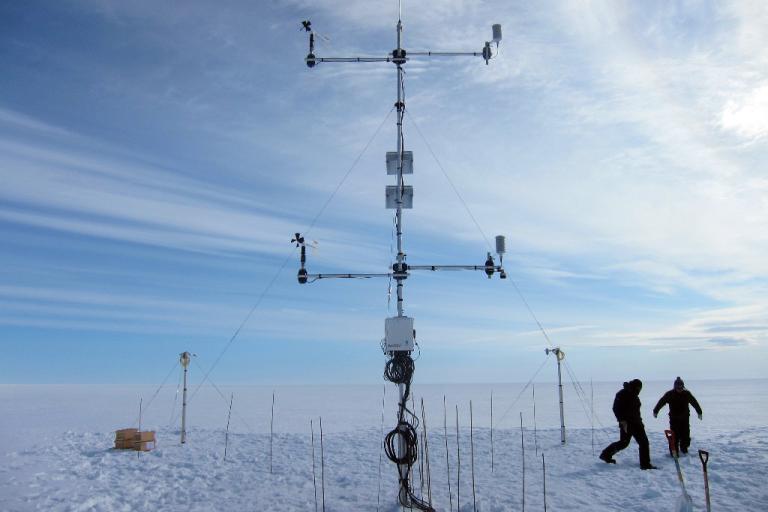WMO issues new guidance on cryosphere measurements

WMO’s Commission for Observation, Infrastructure and Information Systems (INFCOM) approved a new internationally coordinated guide for the measurement of Permafrost Essential Climate Variables of the Global Climate Observing System. This guide will increase global standardization of permafrost observations and access to harmonized data to support advancing the necessary scientific research.
“The degradation of permafrost is probably the largest negative feedback in the atmosphere, with significant, yet, not fully understood consequences of the increasing amount of carbon in the atmosphere,” WMO Deputy Secretary-General Ko Barrett told INFCOM.
“The Intergovernmental Panel on Climate Change (IPCC) reported that the Arctic and boreal permafrost contain almost twice the carbon that is in the atmosphere today. The thawing of permafrost will likely lead to the largest irreversible process influencing climate warming and it will have broad consequences in terms of impacts on the water cycle and the need to strengthen national multi-hazard early warning systems,” she said.
The newly approved guide will contribute to increasing the global standardization of permafrost observations and access to harmonized data to advance necessary scientific research, including supporting the implementation of other WMO flagship initiatives such as the Global Greenhouse Gas Watch (G3W).
It includes permafrost temperature, active layer thickness, and rock glacier velocity. It covers common observation methods, the instrumentation used, the required configuration, and the relevant data reporting aspects.
The guide is included as a new chapter in Volume II, Measurement of Cryosphere Variables, of the WMO Guide for Instruments and Methods of Observation No-8, a flagship publication of WMO since 1950. The cryosphere
It was developed by the Task Team on Permafrost of the Advisory Group on the Global Cryosphere Watch through collaboration with experts from GCOS, Global Network Terrestrial – Permafrost, and the International Permafrost Association.
The cryosphere is the part of the Earth's surface with frozen water such as ice sheets, glaciers, snow and sea ice.
Glaciers
As part of the long standing and successful engagement between the International Association of Cryospheric Sciences (IACS) and the Global Cryosphere Watch (GCW) of the World Meteorological Organization (WMO), a new publication is available through the WMO Library, focusing on the Measurement of Glaciers.
It focuses on methods employed to determine ongoing changes in glacier mass and areal extent in response to climatic variations, and strives to include examples from different glaciated regions around the world.
The new chapter describes conventional methods used to measure winter and summer mass balance on glaciers, it outlines methods used in mass-balance calculations, discusses sources of error in measurements and calculations of mass-balance and outlines methods for bias-correction.
According to preliminary data cited in the WMO State of the Global Climate 2023, the global set of reference glaciers in 2022-2023 suffered the largest loss of ice since records started in 1950, driven by extremely negative mass balance in both western North America and Europe.
Glaciers in the European Alps experienced an extreme melt season. In Switzerland, glaciers have lost around 10% of their remaining volume in the past two years. Western North America suffered record glacier mass loss in 2023 – at a rate which was five times higher than rates measured for the period 2000-2019. Glaciers in western North America have lost an estimated 9% of their 2020 volume over the period 2020-2023.
The 21st century is likely to witness a transformation to automated, real-time glaciological observations, supported by satellite monitoring and modelling, and a regular update of this publication would strongly support future generations of glaciologists and the increased standardization of observations and data.
The manual includes recommendations on archiving of field data, combining different methods to reduce uncertainties in mass-balance results, standardize results using common protocols, and on fostering information exchange between national and international programs.
More information on the new chapter on the measurement of glaciers.










